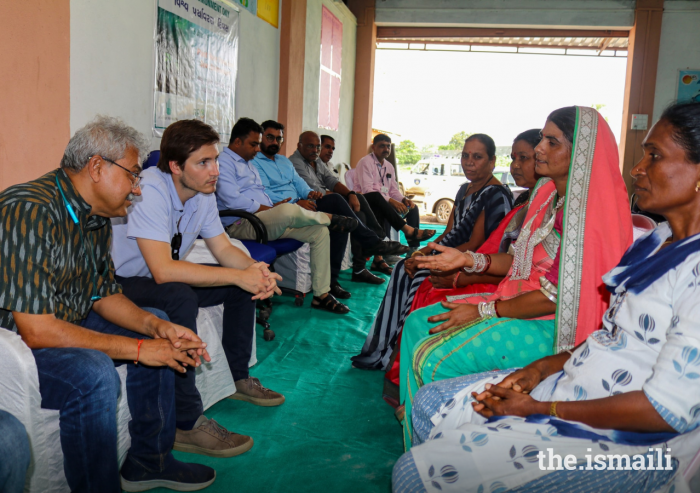A World Heritage Site, Humayun’s Tomb is among 50 monuments in Delhi that were restored by the Aga Khan Trust for Culture. It was recently designated as one of 25 adarsh (or “model”) monuments by the Government of India.
“It staggers the imagination to think of what was created here during the Mughal period, on a scale and with a splendor that had not existed before,” remarked Mawlana Hazar Imam at the ceremony. “And now, as a new Museum is born on this site, visitors will be able to learn in greater depth why these legacies were built, how they served the court and society more generally, and what they have meant since.”
The complex receives some 2 million visitors each year, including 500,000 children, with an even larger number of pilgrims visiting the adjoining dargah of the 14th century sufi shaikh Hazrat Nizamuddin Auliya.
“Located at the juncture of three historically connected sites, Humayun's Tomb and its Gardens, Hazrat Nizamuddin Basti, and the Sundar Nursery,” the museum will serve as a connecting point, said Mawlana Hazar Imam. “The museum will also serve as a bridge between the present and the past — linking the modern city of Delhi to its remarkable heritage, and thus providing a gateway to a truly extraordinary period of human history.”
A starting point for tourists interested in visiting other prominent monuments of Mughal India including the Taj Mahal, the site museum will include a permanent exhibition, galleries for temporary exhibitions, an auditorium for film screenings, a souvenir shop and a café. It is expected to feature live demonstrations of building crafts used by builders of the monuments, such as stone and plaster work, as well as other prominent Mughal crafts.
Minister Sharma described the project as “a classical example of synergy between the government and a non-profit organisation in preserving the heritage of the country and taking it to the world.”
The Aga Khan Trust for Culture has been carrying out conservation work in the Humayun’s Tomb area for nearly 15 years. The engagement began with the revitalisation of the gardens surrounding the Tomb, which Mawlana Hazar Imam offered as a gift to India on the occasion of the 50th anniversary of the country’s independence.
Under a public-private partnership with the Government of India, the work of the Trust grew to encompass the conservation of the tomb and restoration of associated structures, an urban renewal initiative in Nizamuddin Basti, and the redevelopment of the Sundar Nursery – Batashewala complex into a 100-acre city park, as well as significant improvements to the quality of life for the residents of Hazrat Nizamuddin Basti. In each endeavour, AKTC has worked in partnership with the Archaeological Survey of India, the Municipal Corporation of Delhi and the Central Public Works Department.











